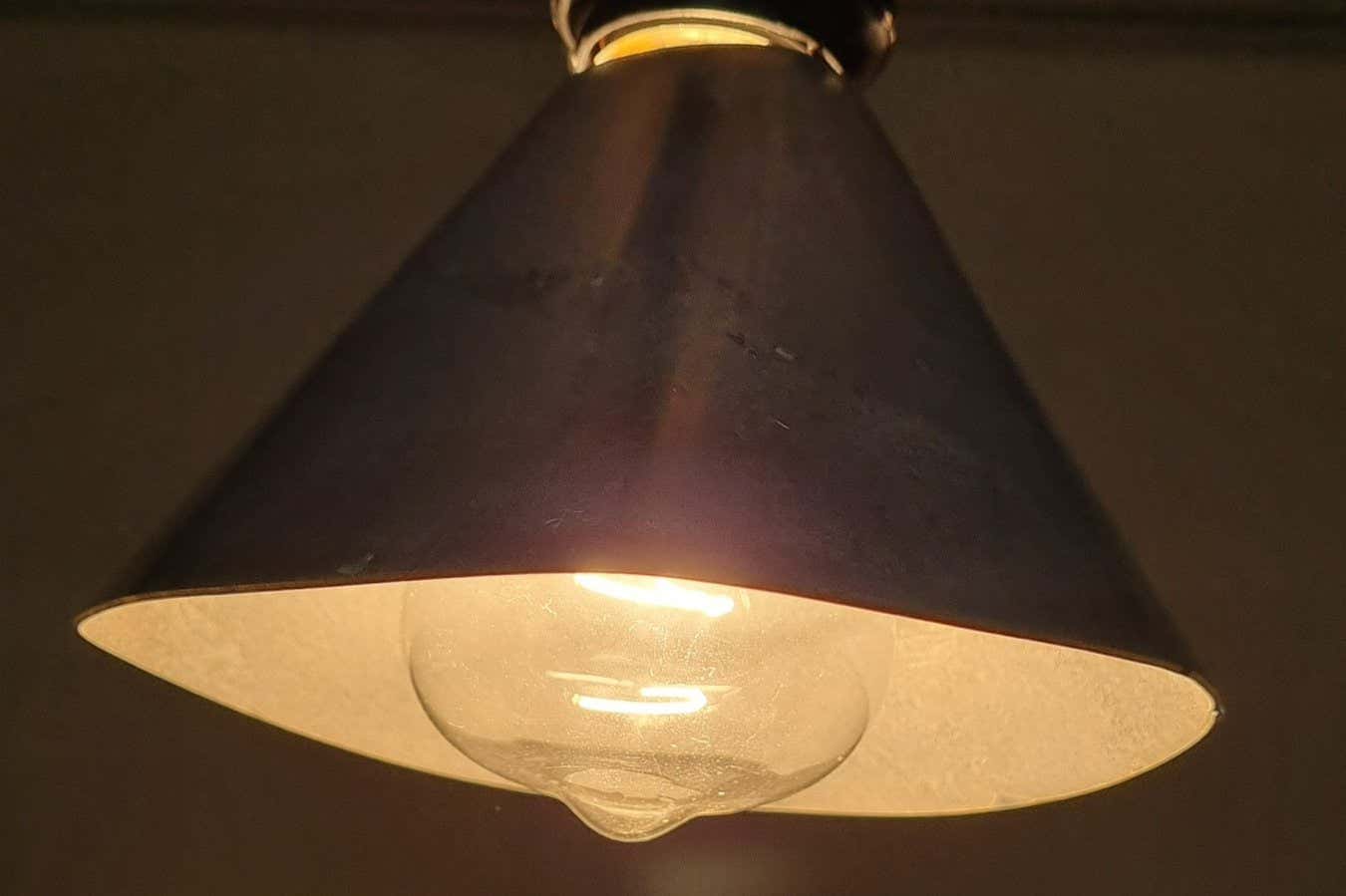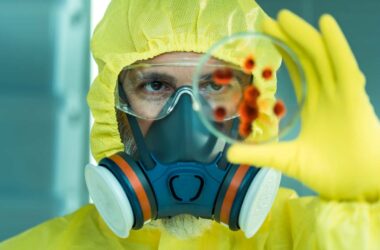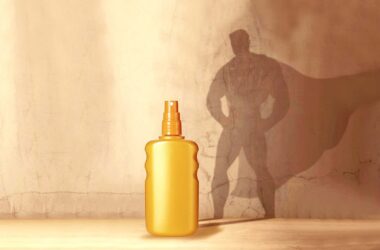The lampshade created by researchers that uses heat from the lightbulb to convert air pollutants into small amounts of carbon dioxide and water
Minhyung Lee
Lampshades coated with an iron or copper-based substance could help tackle indoor air pollution.
Indoor air can be just as poor quality and harmful to health as outdoor urban air, mostly due to volatile organic compounds (VOCs). VOCs are made up of toxic chemicals like acetaldehyde and formaldehyde, which can be released from paint, cleaning products, furniture, or during cooking.
To address this issue, Hyoungil Kim at Yonsei University in South Korea and his colleagues have developed a cheap pollutant-eliminating lampshade. They presented their findings at a meeting of the American Chemical Society in San Francisco, California, on 15 August.
Last year, the team created a substance made of titanium oxide and platinum that speeds up chemical reactions using the heat emitted from lightbulbs. This substance can oxidize VOCs into acetic acid, formic acid, and eventually small amounts of carbon dioxide and water.
Now, the researchers have developed a lower-cost version of the technology that uses either copper or iron.
When tested in a 0.064 cubic meter space with VOCs at concentrations of 1 part per million (ppm) and 10 ppm, the lampshade coatings removed all the VOCs within several hours, while generating small amounts of carbon dioxide and water.
The researchers believe that the copper catalyst may also have disinfectant properties and could help sterilize airborne pathogens.
“Establishing this system is remarkably simple and convenient,” says Kim. “It only requires a coating of catalyst paste onto existing lampshades in your home.”
The lampshades were tested using halogen or incandescent bulbs, which are commonly used in homes and emit temperatures between 100°C (212°F) and 160°C (320°F). The researchers are now working on adapting the coatings to work with light emitting diodes (LEDs), which produce much less heat.
Article amended on 16 August 2023
This article has been changed to correct the size of the space the lampshades were tested in.
Topics:
Insights:
- Lampshades coated with iron or copper-based substances have the potential to reduce indoor air pollution caused by volatile organic compounds (VOCs).
- VOCs, present in indoor environments, can be harmful and come from sources like paint, cleaning products, furniture, and cooking.
- A team of researchers from Yonsei University has developed a cost-effective lampshade that uses heat from lightbulbs to oxidize VOCs into harmless byproducts.
- A lower-cost version of the technology has been created using copper or iron as the catalyst.
- In tests, the lampshade coatings effectively removed VOCs within a few hours, while producing minimal amounts of carbon dioxide and water.
- The copper catalyst may have additional benefits, such as sterilizing airborne pathogens.
- Applying the catalyst paste to existing lampshades is a simple method to implement this system in homes.
- The lampshades currently work with halogen or incandescent bulbs and efforts are underway to adapt them for use with LED bulbs.








